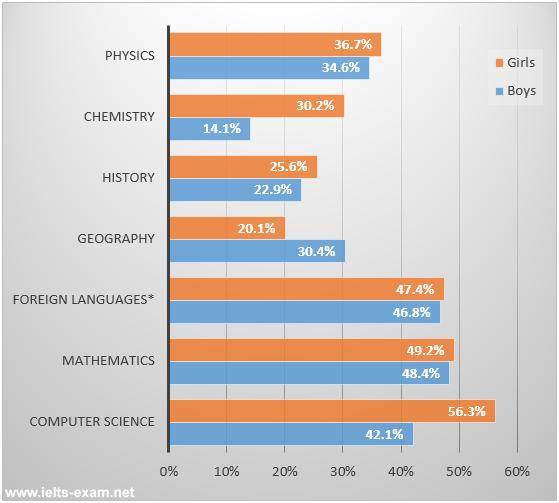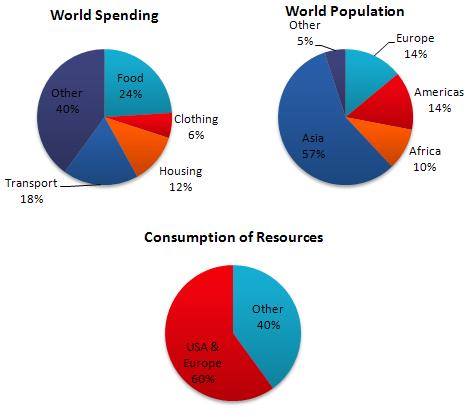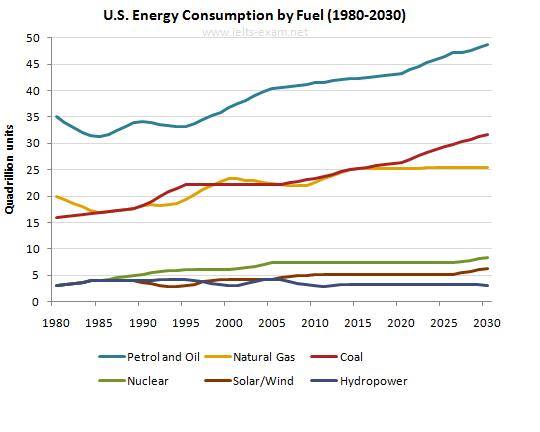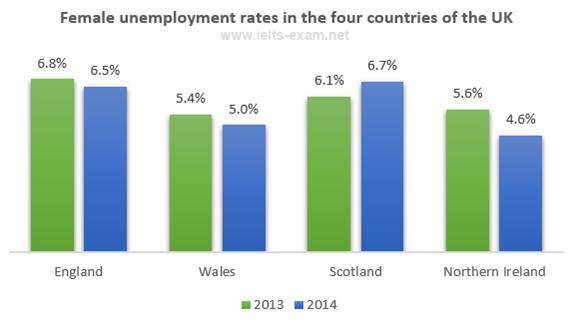Fauzi17
Jan 18, 2016
Writing Feedback / The rate of students who passed major examination in high school [5]
The bar chart below shows the percentage of students who passed their high school competency exams, by subject and gender, during the period 2010-2011.
This bar chart illustrates the percentage of students who passed major examination in high school that divided by gender between 2010 and 2011. Overall, it is important to note that females who passed the exam was dominated in this rate. The percentage of computer science was dominated females, whereas geography is the favorite lesson for males.
Moving to a more detailed analysis, the highest proportion in this rate was experienced by women in computer science by 56.3% compared by men at 42.1%. Subsequently, the most favorite lesson by males that mathematics at 48.4% but the percentage of women more higher than men, which reached a through 1.2%. Moreover , the females released the proportion at more than 35% and the men's proportion shown a reverse. Interestingly, the another science lesson was also popular by women, there was approximately twofold more slight men and witnessed the least number at 14.1%.
Turning to the social sciences, the geography was the most popular lesson for men. There was reached 30.4% and the women saw two-third from the percentage of men. However, the number of history lesson was experienced a through 2.7% more better females. Whilst foreign languages also showed high percentage in this rate, both of females and males witnessed less than a half proportion.
The bar chart below shows the percentage of students who passed their high school competency exams, by subject and gender, during the period 2010-2011.
This bar chart illustrates the percentage of students who passed major examination in high school that divided by gender between 2010 and 2011. Overall, it is important to note that females who passed the exam was dominated in this rate. The percentage of computer science was dominated females, whereas geography is the favorite lesson for males.
Moving to a more detailed analysis, the highest proportion in this rate was experienced by women in computer science by 56.3% compared by men at 42.1%. Subsequently, the most favorite lesson by males that mathematics at 48.4% but the percentage of women more higher than men, which reached a through 1.2%. Moreover , the females released the proportion at more than 35% and the men's proportion shown a reverse. Interestingly, the another science lesson was also popular by women, there was approximately twofold more slight men and witnessed the least number at 14.1%.
Turning to the social sciences, the geography was the most popular lesson for men. There was reached 30.4% and the women saw two-third from the percentage of men. However, the number of history lesson was experienced a through 2.7% more better females. Whilst foreign languages also showed high percentage in this rate, both of females and males witnessed less than a half proportion.

12540601_10206046579.jpg





